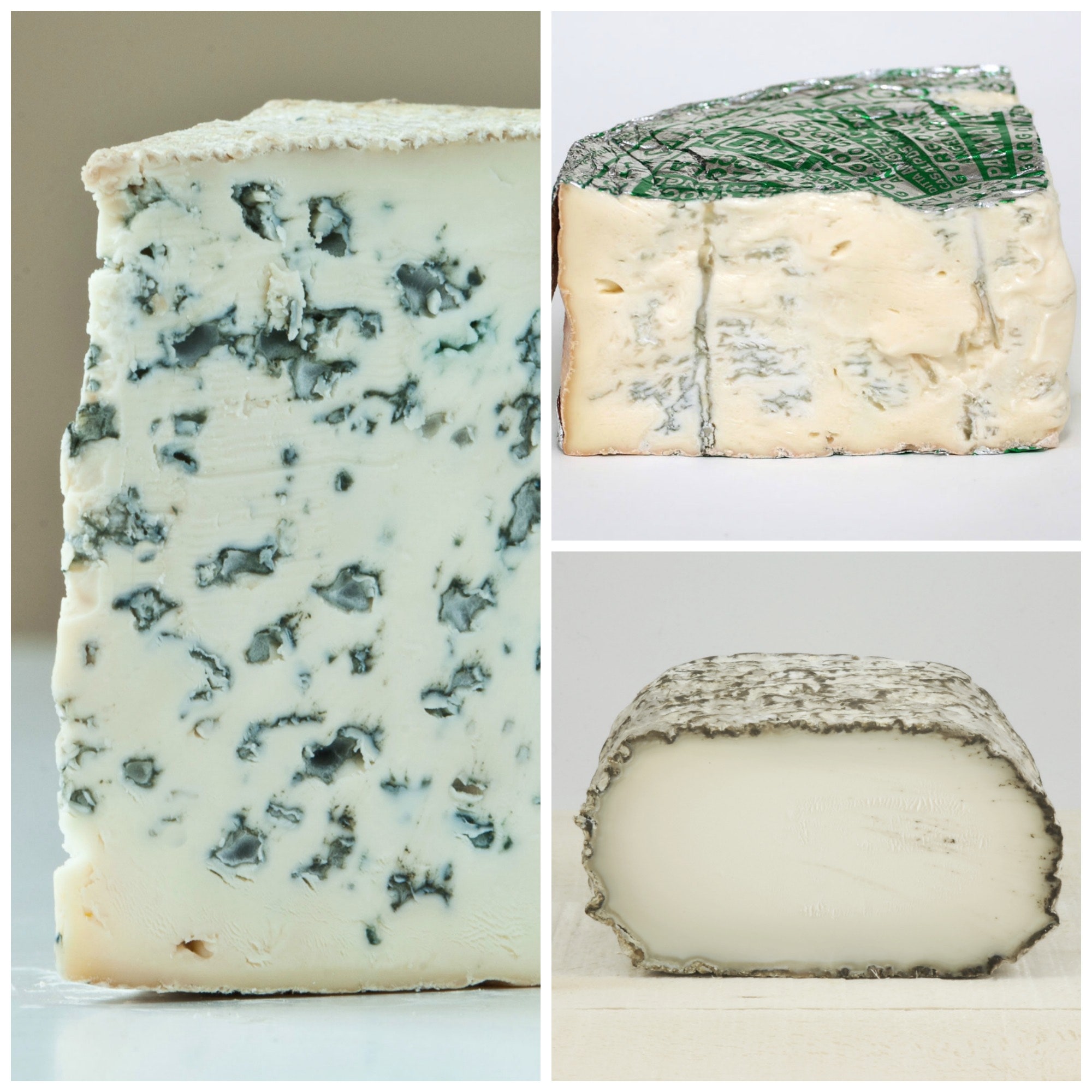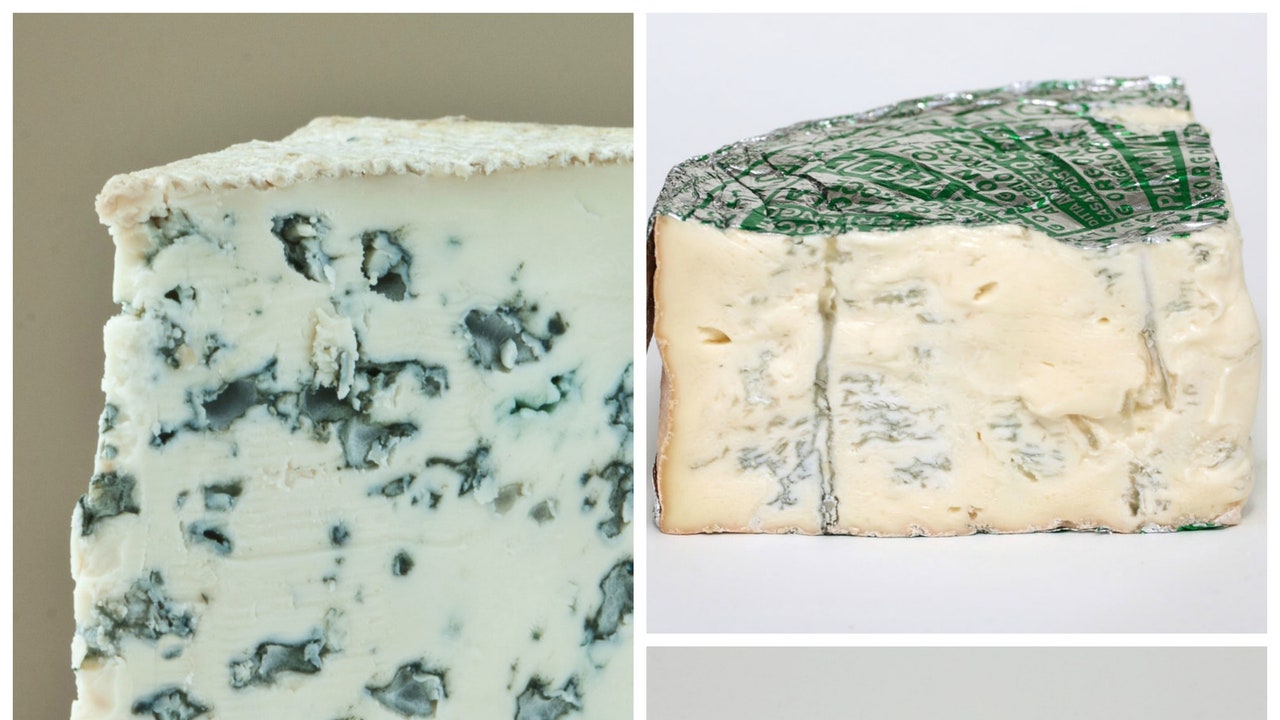Gorgonzola Cheese Overview

Gorgonzola cheese is a popular Italian blue cheese that is known for its creamy texture and tangy flavor. It is named after the town of Gorgonzola near Milan where it was first produced. Made from cow’s milk, Gorgonzola cheese undergoes a unique aging and maturation process, resulting in its distinct blue veins and rich taste. This cheese is loved for its creamy and crumbly texture, making it a versatile ingredient for various recipes and a delightful addition to cheese boards. Its unique flavor and texture make it a favorite among cheese enthusiasts around the world.
1 Gorgonzola Cheese History And Origin
Gorgonzola cheese has a rich history that dates back to the Lombardy region in the north of Italy. It is believed to have been created in the town of Gorgonzola, hence the name. The origins of this cheese can be traced back to the 9th century, making it one of the oldest blue cheeses in existence. Gorgonzola cheese gained popularity in the 12th century and was even mentioned in Dante Alighieri’s Divine Comedy. Today, it is recognized as a symbol of Italian gastronomy and is enjoyed by cheese lovers all over the world.
2 Gorgonzola Cheese Flavor And Texture
Gorgonzola cheese is known for its distinct flavor and texture. It has a creamy and buttery consistency, with a hint of tanginess. The cheese is rich and indulgent, with a balanced saltiness that enhances its overall taste. Gorgonzola’s flavor profile can vary depending on the aging process, with younger cheeses offering a milder taste and older ones showcasing a more robust and complex flavor. The cheese also exhibits a slightly grainy texture, which adds a pleasant mouthfeel. Overall, Gorgonzola cheese delivers a unique and delightful combination of flavors and textures.
Blue Cheese Overview

Blue cheese is a versatile and widely popular category of cheese. It is known for its distinct blue veins or mold that run throughout the cheese, giving it its characteristic flavor and appearance. Blue cheese can be made from various types of milk, including cow, goat, and sheep. It is aged for a particular period, allowing the mold to develop and create its unique taste. Blue cheese comes in different varieties and flavors, ranging from milder and creamier options to stronger, more pungent varieties. It is a favorite choice for cheese lovers and is widely used in culinary applications.
1 Blue Cheese History And Varieties
Blue cheese has a rich history that dates back thousands of years. It is believed to have originated in the caves of Roquefort, France, where the unique blue mold developed naturally. Over time, blue cheese production spread to other regions, leading to the creation of various varieties. Some well-known types of blue cheese include Roquefort, Stilton, and Danish blue. Each variety has its own distinct flavors and textures, ranging from creamy and mild to bold and tangy. Blue cheese continues to be loved and enjoyed by cheese enthusiasts worldwide.
2 Blue Cheese Flavor Profiles And Aging Methods
Blue cheese offers a wide range of flavor profiles, each with its own unique characteristics. Some blue cheeses have a mild and creamy taste, while others are bold and tangy. The aging process greatly influences the flavor development of blue cheese. During aging, the cheese undergoes a transformation, resulting in a stronger and more complex flavor. The aging methods for blue cheese can vary, but common methods include aging in caves or cellars, allowing the cheese to interact with the natural mold and develop its distinctive blue veins. The aging period can range from a few weeks to several months, further intensifying the flavor.
Gorgonzola Cheese Production

Gorgonzola cheese is produced through a specific process that ensures its distinct flavor and texture. The production begins with the use of high-quality cow’s milk, which is heated and inoculated with specific cultures of bacteria. This process helps in the acidification of the milk, which is crucial for the formation of curds. After the curds are formed, they are cut into small pieces and left to rest. The curds are then drained and transferred to molds, where they are compacted and salted. Finally, the cheese is aged in a controlled environment to allow the development of its characteristic blue veins and rich flavors. The aging period typically ranges from three to six months, depending on the desired flavor intensity.
1 Gorgonzola Cheese Ingredients And Production Process
Gorgonzola cheese is made from high-quality cow’s milk, which serves as the main ingredient. To begin the production process, the milk is heated and inoculated with specific cultures of bacteria. This helps in the acidification of the milk, which is essential for curd formation. Once the curds are formed, they are cut into small pieces and left to rest. The curds are then drained and transferred to molds, where they are compacted and salted. The final step involves aging the cheese in a controlled environment, allowing the development of its characteristic blue veins and rich flavors.
2 Gorgonzola Cheese Aging And Maturation Techniques
Gorgonzola cheese undergoes specific aging and maturation techniques to develop its distinct flavors and textures. After being formed into molds, the cheese is aged in a controlled environment, typically for a period of three to four months. The aging process allows the growth of blue mold, which contributes to the characteristic blue veins in the cheese. During this time, the cheese develops a crumbly texture and a complex flavor profile that ranges from tangy and sharp to creamy and buttery. Proper temperature and humidity levels are crucial in achieving the desired maturation for Gorgonzola cheese.
Blue Cheese Production

Blue cheese production involves specific ingredients and manufacturing processes. It starts with the use of cow’s milk, but sometimes goat or sheep milk can be used as well. The milk is curdled using rennet, and then the curds are cut into small pieces and heated to release the whey. After draining the whey, the curds are salted and transferred to molds. Once in the molds, the cheese is inoculated with blue mold spores, typically Penicillium roqueforti. Afterward, the cheese is left to age and ripen for several weeks or months, during which the blue mold develops and gives the cheese its characteristic flavor and appearance. The aging process is done in controlled environments such as caves or temperature-controlled rooms.
1 Blue Cheese Ingredients And Manufacturing Process
Blue cheese is made from cow’s milk, although goat or sheep milk can sometimes be used as well. The first step in manufacturing blue cheese is to curdle the milk using rennet. The curds are then cut into small pieces and heated to release the whey. After draining the whey, the curds are salted and transferred to molds. Blue cheese is inoculated with blue mold spores, typically Penicillium roqueforti, which gives it its distinct blue veins. The cheese is then aged and ripened for several weeks or months in controlled environments like caves or temperature-controlled rooms.
2 Blue Cheese Aging And Ripening Methods
Blue cheese undergoes a unique aging and ripening process that contributes to its distinct flavor and texture. After the cheese is formed, it is typically aged for several weeks to several months. During this time, the cheese is stored in controlled environments such as caves or temperature-controlled rooms. The aging process allows the flavors to develop and intensify, while the mold spores continue to grow and create the characteristic blue veins throughout the cheese. The length of aging can vary depending on the desired flavor profile, from milder and creamier to stronger and sharper.
Gorgonzola Cheese Vs Blue Cheese: A Comparison

Gorgonzola cheese and blue cheese are both popular choices when it comes to adding a rich and tangy flavor to dishes. While they both fall under the category of blue cheese, there are some distinct differences between them.
Gorgonzola cheese is typically softer and milder in flavor compared to other blue cheeses. Its creamy texture and subtle notes of sweetness make it a versatile option for a wide range of dishes. On the other hand, blue cheese varies in intensity and flavor, with some varieties offering a stronger and sharper taste.
When it comes to choosing between Gorgonzola cheese and blue cheese, it ultimately comes down to personal preference and the desired flavor profile for a particular recipe. Both cheeses can be used in salads, risottos, sauces, and dressings, adding a distinctive twist to the dish. So whether you prefer the milder and creamier notes of Gorgonzola or the robust and bold flavors of blue cheese, both options are sure to elevate your culinary creations.
1 Differences In Taste, Texture, And Aroma
Gorgonzola cheese and blue cheese have distinct differences when it comes to taste, texture, and aroma. Gorgonzola cheese is typically softer and milder in flavor compared to other blue cheeses. It has a creamy texture and subtle notes of sweetness. Blue cheese, on the other hand, varies in intensity and flavor, with some varieties offering a stronger and sharper taste. It also has a crumbly texture and a pungent aroma. These differences make each cheese unique and allow for different culinary uses and pairing recommendations.
2 Culinary Uses And Pairing Recommendations
Gorgonzola cheese and blue cheese offer a wide array of culinary uses and pairing recommendations.
- Culinary Uses:
- Both cheeses are excellent choices for cheeseboards, adding depth and complexity to any selection.
- Gorgonzola is often crumbled over salads or used in pasta dishes, while blue cheese can be melted into sauces or used as a burger topping.
- Gorgonzola pairs well with fruits like pears and figs, while blue cheese complements flavors like honey or walnuts.
- Pairing Recommendations:
- Gorgonzola pairs beautifully with sweet wines like port or dessert wines, while blue cheese shines with bold red wines or strong beers.
- Both cheeses can be enjoyed with crusty bread or crackers, allowing the flavors to unfold with each bite.
- For a gourmet twist, try pairing Gorgonzola with dark chocolate or blue cheese with caramelized onions.
Indulge in the versatility of these cheeses by experimenting with different combinations and discovering your favorite culinary creations.
Conclusion

In conclusion, Gorgonzola cheese and blue cheese offer unique flavors, textures, and culinary experiences. While Gorgonzola is known for its milder and creamier taste, blue cheese captivates with its bold and pungent flavors. Both cheeses have a rich history and undergo specific aging and ripening processes to develop their distinct characteristics. When it comes to culinary uses and pairings, Gorgonzola and blue cheese each have their own versatility and can be enjoyed in a variety of dishes and with different accompaniments. Whether you prefer the creamy elegance of Gorgonzola or the intense punch of blue cheese, both options are sure to add depth and complexity to your culinary creations.
1 Final Thoughts On Gorgonzola Cheese And Blue Cheese
In conclusion, Gorgonzola cheese and blue cheese offer unique flavors, textures, and culinary experiences. While Gorgonzola is known for its milder and creamier taste, blue cheese captivates with its bold and pungent flavors. Both cheeses have a rich history and undergo specific aging and ripening processes to develop their distinct characteristics. When it comes to culinary uses and pairings, Gorgonzola and blue cheese each have their own versatility and can be enjoyed in a variety of dishes and with different accompaniments. Whether you prefer the creamy elegance of Gorgonzola or the intense punch of blue cheese, both options are sure to add depth and complexity to your culinary creations.
2 Choosing The Right Cheese For Your Recipes And Preferences
When it comes to choosing the right cheese for your recipes and preferences, both Gorgonzola and blue cheese offer their own unique characteristics. Gorgonzola, with its milder and creamier taste, is perfect for dishes that call for a subtle and smooth cheese flavor. On the other hand, if you’re looking for a bolder and more pungent taste, blue cheese is the way to go. Its intense flavor pairs well with rich and hearty dishes. Ultimately, the choice between Gorgonzola and blue cheese boils down to your personal preference and the specific dish you’re preparing.
FAQ About Gorgonzola Cheese Vs Blue Cheese: Comparing Cheeses
Q: What is the main difference between Gorgonzola cheese and Blue cheese?
A: The main difference lies in their origin and flavor profile. Gorgonzola cheese is an Italian blue cheese with a milder and creamier taste compared to Blue cheese, which is typically sharper and tangier.
Q: Can Gorgonzola cheese and Blue cheese be used interchangeably in recipes?
A: While both cheeses are blue-veined and offer a tangy flavor, they have distinct tastes that might not always substitute well for one another in recipes. It’s best to choose based on the desired flavor profile of the dish.
Q: Are there any nutritional differences between Gorgonzola cheese and Blue cheese?
A: Both cheeses are rich in calcium, protein, and fat. Gorgonzola tends to be slightly lower in fat content than Blue cheese. However, the nutritional differences are minimal, and both should be consumed in moderation.
Q: Which cheese is better for pairing with wines – Gorgonzola cheese or Blue cheese?
A: Both Gorgonzola and Blue cheese pair well with a variety of wines, but Gorgonzola’s creamier texture and milder taste make it a versatile option for wine pairings. Blue cheese’s bold flavor can be best complemented by robust red wines.
Q: Are there any specific serving suggestions for Gorgonzola cheese and Blue cheese?
A: Gorgonzola cheese is excellent for spreading on crackers or adding to salads, while Blue cheese is a popular choice for cheese boards and pairing with fruits and nuts. Both cheeses can also be melted into sauces for pasta or burgers.
Q: Do Gorgonzola cheese and Blue cheese have any unique regional or cultural significance?
A: Gorgonzola cheese is protected by the European Union’s Protected Designation of Origin status, meaning it must be produced in certain regions of Italy following specific methods. Blue cheese, on the other hand, encompasses various types of cheeses from different regions with blue veins.
Q: How should Gorgonzola cheese and Blue cheese be stored to maintain freshness?
A: To preserve their flavors and textures, both Gorgonzola and Blue cheese should be stored in airtight containers or wrapped tightly in wax paper and placed in the refrigerator. It’s essential to keep them away from strong-smelling foods to prevent flavor contamination.

Hot Pot Chinese Restaurant, located in Mechanicsville, MD 20659, is a culinary destination that offers a delightful array of Chinese cuisine. From the cozy ambiance to the delectable dishes, Hot Pot Chinese Restaurant is dedicated to providing an exceptional dining experience for all patrons. Since our establishment, Hot Pot Chinese Restaurant has been committed to serving the finest Chinese food, offering a diverse menu that caters to a wide range of tastes. Whether you’re craving traditional favorites like Kung Pao Chicken and Mongolian Beef or seeking out more adventurous options like Szechuan Spicy Hot Pot, our menu has something to satisfy every craving.